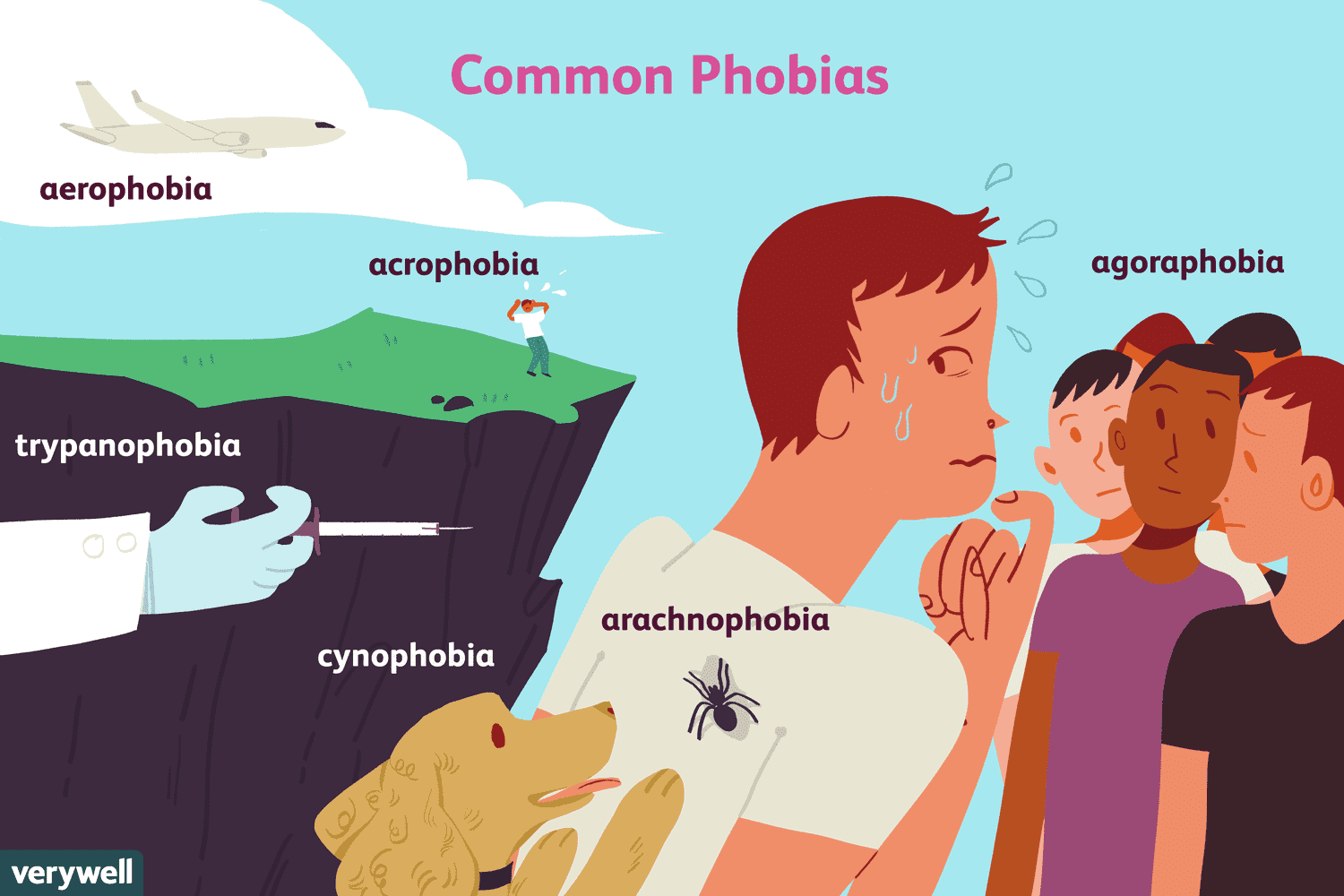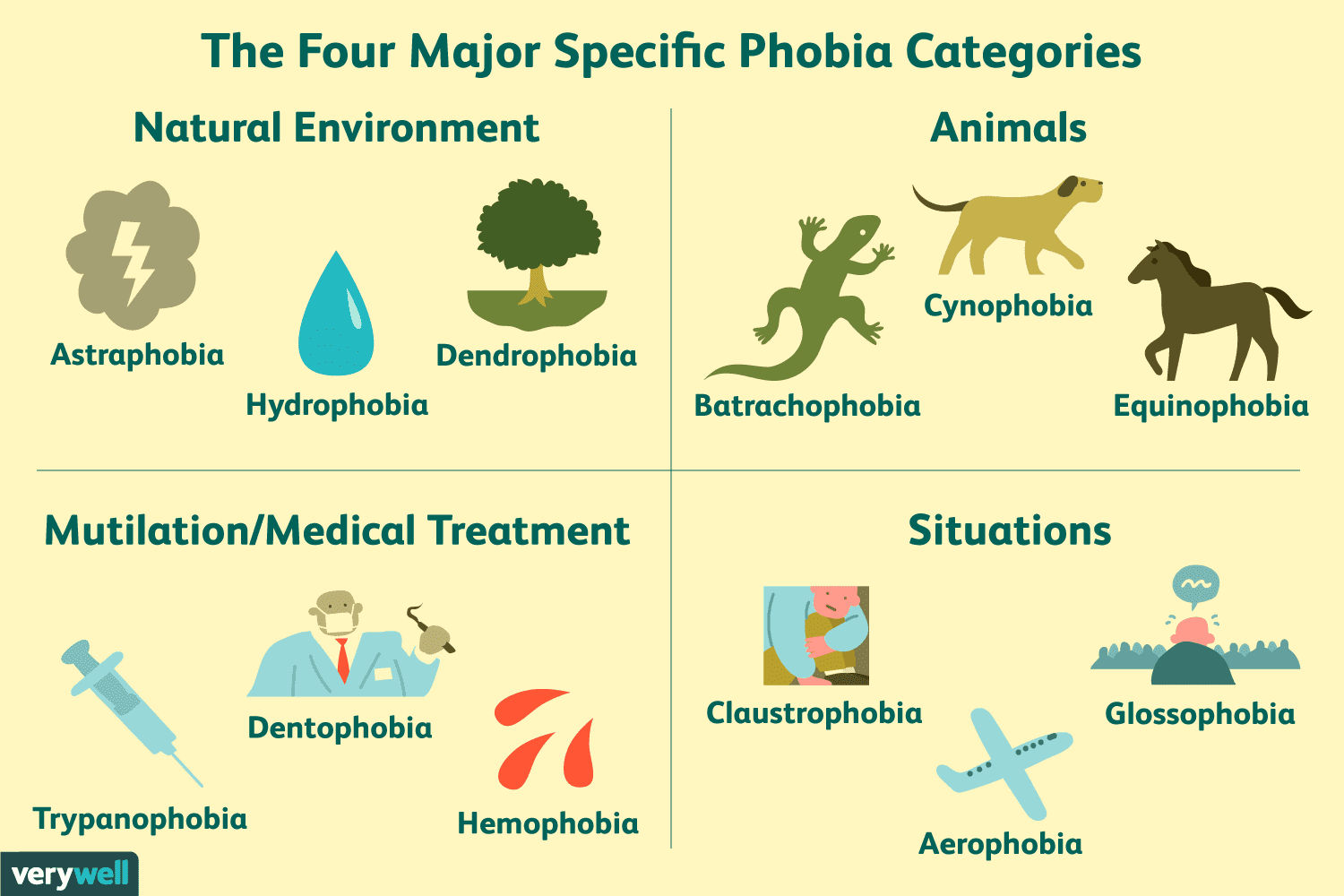All about phobias
Omar Dajani. 02/19/2021
Characterized as an anxiety disorder, a phobia is defined as an irrational and excessive fear of an object or situation. People with phobias feel an incredibly high sense of danger or harm in response to different contexts. The National Institute of Mental Health estimates that 8% of American adults have some type of phobia, with women experiencing them more often than men. The majority of people know what phobias are, but there is a wide range of information about them that the average person likely would not know.
The exact cause of phobias is unknown. They are theorized to develop starting in childhood, adolescence or early adulthood and are typically caused by a traumatic reaction to an object, animal or situation. Even then, the phobia is usually developed towards something that is not harmful, with the person only believing it to be due to their anxiety. The main aspect of phobias that triggers the phobic reactions is still unclear, even with years of research.
Some of the most common phobias include arachnophobia (the fear of spiders), aerophobia (the fear of flying), cynophobia (the fear of dogs), trypanophobia (the fear of injections) and agoraphobia (the fear of being alone in a situation where escape seems impossible). All these phobias have logical explanations for occurring, such as arachnophobia being passed down from our ancestors who did not understand spiders and cynophobia developing due to traumatic experiences with the animals.
Other common phobias include acrophobia (the fear of heights), mysophobia (the fear of germs), social phobia (which is the same as social anxiety disorder), coulrophobia (the fear of clowns) and glossophobia (the fear of public speaking). Just like the majority of the others mentioned above, the development of these phobias can occur because of a traumatic experience. However, social phobia is more unique, as it occurs due to various other factors besides just experiences. The same applies to some of the other aforementioned phobias as well, as those can be the result of evolution.
While ten of the most common phobias are highlighted in this article, there are many more that were not mentioned. The list containing all known phobias is massive, and more are still being discovered today (such as trypophobia). There are so many phobias to the point where four categories were created to assign each phobia. The four categories are phobias related to nature, phobias related to animals, phobias related to medical treatment and phobias related to various situations. These are almost universal categories, housing many different phobias inside them.
But wait, where does the word ‘phobia’ even come from? Where do each of the specific names come from as well, and why some of them sound foreign? Well, the names of the various phobias come from the Greek word of whatever the fear is from. So, aerophobia, for example, combines the Greek word for wind, Aero, with the phobia suffix. This is true for all the other phobias, such as hydrophobia/aquaphobia being a combination of hydro/aqua (Greek words for water) and the suffix. The word ‘phobia’ itself is also taken from a Greek word. The word in question means aversion or fear.
As mentioned before, phobias are actually a type of anxiety disorder. As a result, there are arrays of symptoms associated with them, some of which might not be obvious. For example, it is likely obvious that someone with a phobia will feel anxiety and restlessness when confronted by whatever it is they fear, but if the situation is really dire, then they might lose touch with reality for a brief period and get an anxiety attack. This might sound silly considering some phobias appear to be random and strange, but they genuinely appear as a threat to the person experiencing the fearful reactions.
There are many treatment options for phobias. Cognitive behavioral therapy is the most common form of treatment, helping the victim learn to not let their fears control them. Other options include medications such as antidepressants and beta blockers, but these are not recommended as they have a lot of unpleasant side effects (such as a dry mouth, headaches and drowsiness). Exposure therapy is an option as well, which literally exposes the victim to the subject of their phobia(s) in an effort to heal them.
The world of phobias is interesting. What might appear normal to one person may appear as life-threatening to another. Even though there are many scientists who still do not completely understand phobias, our level of knowledge is increasing with time, ensuring a future where all phobias might get the proper medical attention they deserve.
Cover Photo: (News Medical - Vectorium - ShutterStock)

Omar Dajani is an international student from Jerusalem, Palestine. He is currently a sophomore at Fullerton College and is majoring in English with a minor in Computer Science. He enjoys gaming, blogging, journaling, meditating, and going on walks. He intends on transferring to UC Berkeley for Fall 2021.

